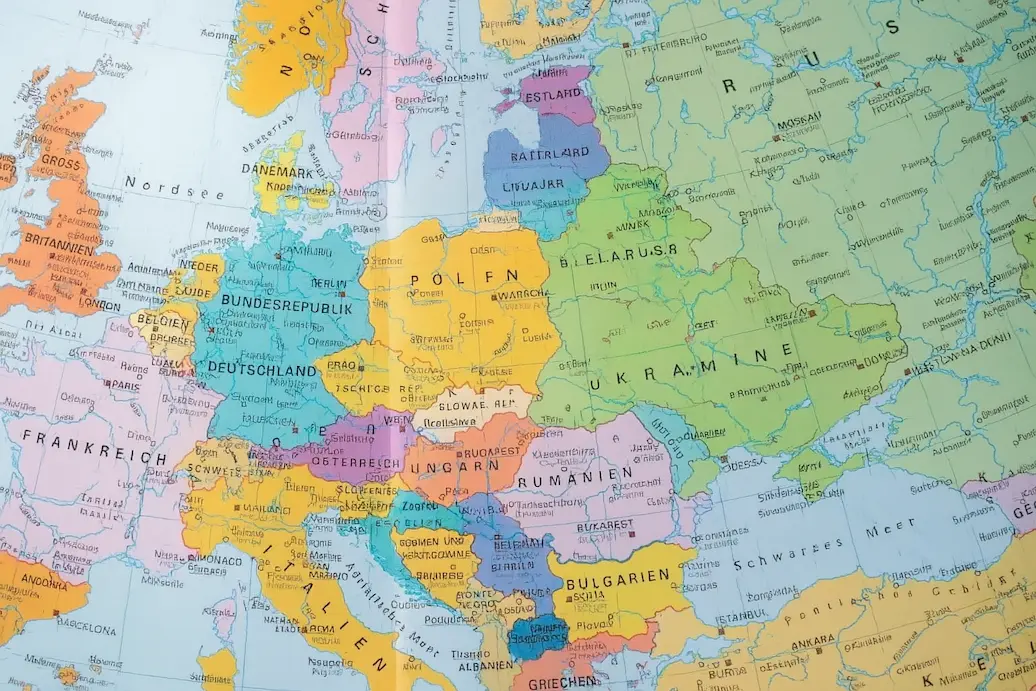
Italy is a country with many different languages and dialects. One of these is Lombard, spoken in Lombardy and in Milan
When people talk about the hardest languages to learn, Chinese is often the first that comes to mind. But it's not that simple

Pheraphs you can think that the world most difficult language in the world is Arabic, or japanese, But in reality there is not one language that is more dificult than another, because each language has its own characteristics that make it for dificult and easy in the same time
Take Mandarin Chinese, for example: its writing system is extremely complex, where each word is writeen with one or more differnet character, and also it pronunciation can be extremely challenging since a wrong tone can change a word's meaning entirely. Yet its grammar is surprisingly simple and logical, and can be learned in only a few hours.
Meanwhile, Finnish and Hungarian have relatively simple pronunciation but notoriously complex grammatical systems, with cases and structures unfamiliar to most learners.
Familiarity also plays an important role. A Spanish speaker can learn Portuguese in a relatively short time, since the two languages are very similar to each other while it will take much more time to learn a language that is compleatly different like Japanese.
Ultimately, motivation also plays a crucial role. A person who is not really motivated or has a bad study method will not progress fast., or it will learn the language in a passive way and forget thing faster
Also what is easy for one can be seen as extremely challenging for somebody else, so there is no an easy way to rank languages according to difficulty
In this guide, we explore the languages considered most difficult based on four main categories: grammar, pronunciation, writing system, and the time it takes to learn. Keep in mind: language learning is personal, and difficulty is relative.
Languages with complex inflection, extensive case systems, or unique syntactic rules, I guess that even learning those terms can be boring, thats because grammar is usually one aspect where msot of lerners struggle the most, and there are some languages or language families that have a system so complicated that challenge even experienced learners, the most commom or example are:
These languages use agglutination, it means that they add multiple suffixes onto a word to create new words or sentences. but there is more, they also have what is called vowel harmony, the rule that certain vowels don't want to stay together so the suffix has to change according to the last letter of the word.
For example the suffix to form the
Known for its 18 grammatical cases that can easily scare new learners, moreover there are two present tense that you have to use according if you are talking to a definite or an undefinite object
Their grammar is similar to Turkish but they feature up to 15 cases, and a syntax that doesn’t map easily onto English logic, requiring a rethink in how sentences are formed.
Languages like Tamil and Kannada follow a Subject-Object-Verb order and employ extensive verb conjugations and compound structures that differ greatly from Indo-European norms.
Extremely complex grammar, with ergative structures, multiple cases, and consonant-heavy phonologies a real challenge for outsiders.
In Inuit, a single word can encapsulate what would take an entire sentence in English, using multiple morphemes for precise meaning.
Both feature complicated case systems and irregular verbs, but the biggest challenge is the difference between perfective and imperfective verbs. These languages have two groups of verbs one used to express actions that are completed, and the other for actions that are still ongoing and each group has its own conjugation rules.
Some languages feature sounds not found in most other languages, making pronunciation particularly tricky:
Spoken primarily in Southern Africa and Namibia, these are so difficult to pronounce that they can alter the structure of the throat of a foreign person trying to speak them.
Depending on the dialect, it has up to nine tones small pitch differences can lead to completely different meanings.
A tonal language with six to nine tones, it demands acute listening skills and precision to avoid confusion between similarly pronounced words.
With four main tones and a neutral one, learners must master pitch modulation early to be understood accurately.
Languages like Yoruba rely on tone for grammatical and lexical meaning, making tone recognition a key skill for learners.
They include retroflex consonants sounds produced with the tongue curled back which don't exist in many other language families.
Features three lengths (short, long, overlong) for both vowels and consonants, and is considered the language with the most sounds on Earth.
Moving beyond the Latin alphabet if a language is written in another script, that will make things far more difficult for learners.
A logographic system where each character represents a word or idea. Learners must memorize at least two thousand characters to read a simple text.
It is particularly challenging because not only does it use a writing system similar to Chinese (kanji), but also two other alphabets: hiragana and katakana. So a student has to learn not one but three writing systems!
The script has the largest number of letters in any alphabet and contains complex subscript letters that make reading intricate.
Uses a tonal script where each letter represents a syllable. Moreover, it is written without spacing between words, and tone rules are embedded into the writing.
Like Tamil and Kannada, these use rounded, complicated characters, often joined together, requiring careful visual memorization and stroke mastery.
Written right to left, its letters change shape depending on where they appear in a word. It also omits vowels in standard writing, requiring strong contextual reading.
According to the Foreign Service Institute (FSI), these languages take over 2,000 hours of study for English speakers to reach professional proficiency:
Not only is Standard Arabic complex, but the language also includes numerous dialects, many of which differ significantly. To become truly fluent and hold everyday conversations, learners often need to study both the standard form and at least one regional dialect.
One of the most difficult for English speakers due to layered politeness levels, non-Latin writing systems, and verb-final sentence structure.
Requires mastery of tones and thousands of logographic characters a double challenge in both speaking and writing.
While its script (Hangul) is logically structured and relatively easy, the grammar, honorifics, and nuances of verb usage make it tough for non-native learners.
Popular languages like Spanish, French, and Japanese offer a wealth of textbooks, apps, and online tutors. Less widely studied ones, like Xhosa or Georgian, may have limited materials and communities for practice.
Languages such as Arabic and Chinese are not monolithic learners must often choose a specific dialect or regional form, which may differ significantly in pronunciation, vocabulary, and grammar.
So, what is the hardest language to learn? It depends on your background, learning style, and goals. A native English speaker might struggle with Slavic grammar, while a Chinese learner might find tones intuitive but English spelling a nightmare.
In the end, the most difficult language is the one you’re not motivated to learn. But with the right mindset and persistence, even the most daunting languages can become second nature.

Italy is a country with many different languages and dialects. One of these is Lombard, spoken in Lombardy and in Milan

The Roman dialect, or Romanesco, is the language spoken in the city of Rome, the capital of Italy, and throughout the Lazio region

Discover the Venetian language, the unique language you will hear if you walk through the streets of Venice

When you think of the Italian language, Italy is likely the first place that comes to mind. However, Italian is spoken in several other countries around the world